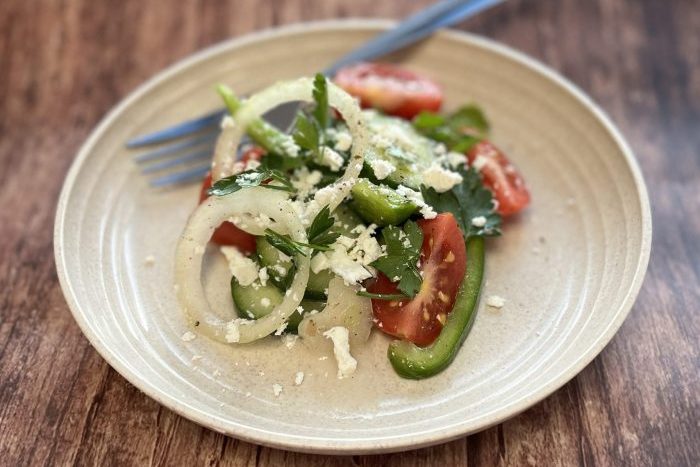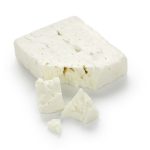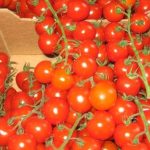This Bulgarian salad recipe is so easy to follow. Children love to chop and prepare salad vegetables, turning them into a beautiful, colourful dish that highlights the colours of the Bulgarian flag. Delicious served as a side salad with a main meal!
Skills Check
Follow a recipe; follow food safety & hygiene rules; tidy away; use measuring spoons and cups; chop using the bridge/claw technique safely; whisk, snip herbs with scissors.
Equipment
Chopping board, knife, large bowl, small bowl, measuring cups and spoons, fork/whisk, scissors.
Allergens
Milk | Sulphites
(Please note the allergens listed are indicative only. Allergens vary depending on brand; check the labels on the products you use.)
Ingredients (serves 6):
- 4 medium tomatoes, chopped
- 1 large cucumber, sliced
- 4 green or red peppers, sliced
- 1 white onion, chopped
- 2 tbsp fresh parsley, snipped
- 1/2 cup sunflower oil
- 1/4 cup red wine vinegar
- Freshly ground black pepper, to taste
- 1/2 cup Bulgarian Sirene cheese or low fat feta cheese
Method
- In a large bowl, place the tomatoes, cucumbers, peppers, onions, and parsley. Toss well to mix.
- Place the oil, vinegar, salt and pepper in a small bowl and mix with a fork or whisk.
- Pour the dressing on top of the vegetables.
- Top the salad with crumbled cheese. Enjoy!
So thinking about Shopska salad ..

Vegetables are so good for us! Low in fat, sugar and salt and high in vitamins and minerals.
Feta cheese is a source of protein and calcium. Although lower in fat than some cheeses it should be used sparingly due to its very high salt content.
Salad dressing can be high in fat because oil is usually the main ingredient. Using unsaturated oil, such as olive or rapeseed oil, is a healthier choice but still only use small amounts.
Nutritional Information
| Energy | 1107kJ / 267kcal | 14% | |
| Med | Fat | 21.0g | 30% |
| Low | Saturates | 3.2g | 16% |
| Low | Sugars | 9.9g | 11% |
| Low | Salt | 0.17g | 3% |
per 375g serving
% of an adult's reference intake
Typical values per 100g: Energy 312kJ /76kcal
Notes
A traffic light system is used on nutrition labels to make it easier to see which foods and drinks are lower in calories, fat, sugar and salt. Try and choose more ‘greens’ and ‘ambers’ and fewer ‘reds’, and stick to smaller portions of ‘reds’.
Just because a recipe or a food has a red traffic light doesn’t mean you shouldn’t eat it. Understanding why a food or recipe might have a red light can be helpful. For example oily fish is high in total fat and so any recipe containing oily fish is likely to be ‘red’ for fat. But it is recommended that we eat oily fish at least once a week because the type of fat it contains is beneficial for our health.
% Reference Intakes are also shown. Reference Intakes are guidelines about the approximate amount of particular nutrients and energy required for a healthy diet (based on an average-sized woman doing an average amount of physical activity). Most children will require less than these Reference Intakes. The contribution of one serving of a food or drink to the Reference Intake for each nutrient is expressed as a percentage.





